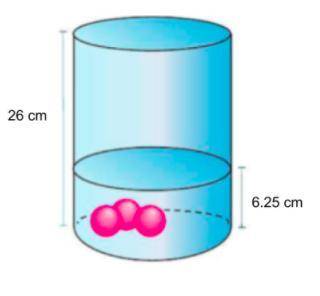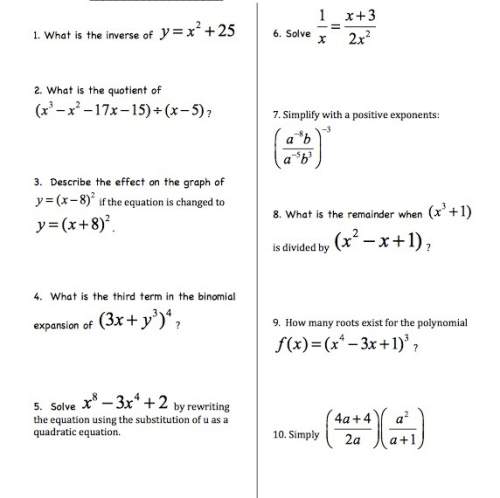
Mathematics, 22.10.2020 22:01 cutegirl0987
HELP PLEASE! While conducting an experiment of dropping marbles into a glass partially filled with water, it was observed that the water level rises consistently for each marble added. This experiment is shown below. It should also be noted that further into the experiment it was observed that a total of 7 marbles in the glass resulted in a water level of 7.25 cm. Model this relationship appropriately to determine how many marbles would result in glass being exactly half full. Also, find the maximum number of marbles that can be added before the glass overflows. And make a determination of how much water was in the glass originally. the model ( it shows 26 cm for the glass height and had 3 marbles with a water level of 6.25 cm)


Answers: 1
Another question on Mathematics

Mathematics, 22.06.2019 00:50
The students in a class were asked how many siblings they have. the data obtained is represented in the dot plot. the number of students who have no siblings is . the number of students who have three or more siblings is .
Answers: 1

Mathematics, 22.06.2019 01:30
Study results indicate that the mean length of time people spend on a bus in a city is between 21.2 min and 24.5 min what is the study margin of the error?
Answers: 1

Mathematics, 22.06.2019 02:00
Study published in the journal of personality and individual differences found that adults with adhd displayed more creative achievement than those who didn't have the disorder. "for the same reason that adhd might create problems, like distraction, it can also allow an openness to new ideas," says holly white, assistant professor of cognitive psychology. "not being completely focused on a task lets the mind make associations that might not have happened otherwise." white and priti shah at the university of michigan gave 60 college students – half of them with adhd – a series of tests measuring creativity across 10 domains. the adhd group scored higher across the board. the adhd group showed more of a preference for brainstorming and generating ideas than the non-adhd group, which preferred refining and clarifying ideas. the adhd status of the participants was established by asking whether the individual had ever been clinically diagnosed with adhd/add. the tests of creativity were pencil-and-paper tasks administered in a laboratory setting. each of the ten scales was comprised of multiple questions, the scores on which were summed (e.g., writing creativity: "how many words can you make from the letters in the word 'psychology' invention creativity: "write down as many uses for a paper clip that you can think of.") this procedure does allow for a participant to be scored as showing no creativity under these conditions. a) state the research question in plain language (i wonder if is related to (1 point) b) state the null hypothesis (1 point) c) state the research hypothesis (1 point) d) is the research hypothesis directional or non-directional (1 point) e) name the predictor / independent variable f) give the operational definition of the predictor / independent variable g) evaluate the construct validity of the predictor / independent variable. (face, procedure, method-match) h) name the outcome / dependent variable i) give the operational definition of the outcome / dependent variable. j) evaluate the construct validity of the outcome / dependent variable. (face, procedure, method-match)
Answers: 1

Mathematics, 22.06.2019 04:10
15. if the 8% tax on an item amounts to $0.96, what is the final price (tax included) of the item?
Answers: 2
You know the right answer?
HELP PLEASE!
While conducting an experiment of dropping marbles into a glass partially filled with...
Questions



Mathematics, 04.08.2019 20:30

Mathematics, 04.08.2019 20:30



Mathematics, 04.08.2019 20:30

History, 04.08.2019 20:30

History, 04.08.2019 20:30


Mathematics, 04.08.2019 20:30

Mathematics, 04.08.2019 20:30

Mathematics, 04.08.2019 20:30

Mathematics, 04.08.2019 20:30


History, 04.08.2019 20:30


Biology, 04.08.2019 20:30

Computers and Technology, 04.08.2019 20:30

Arts, 04.08.2019 20:30




